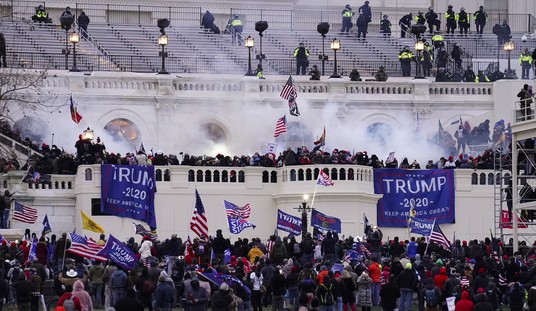The nation's biggest, richest and most powerful labor unions spent months organizing the "One Nation Working Together" rally at the Lincoln Memorial on Oct. 2. With midterm elections approaching, they hoped to put on a show of political strength to energize struggling Democratic candidates. But even after giving it everything they had, they still weren't able to draw as many people as Glenn Beck's Aug. 28 "Restoring Honor" rally. Why not?
Because the labor movement is shrinking, aging and divided. Because the best program its leaders (and co-sponsors at the NAACP) could put together was one featuring Al Sharpton, Jesse Jackson, Richard Trumka, Van Jones and Harry Belafonte. And because George W. Bush is no longer in the White House. Put those factors together, and Big Labor's big march fell flat.
First, the shrinking part. According to 2009 figures from the Labor Department, 12.3 percent of American workers belong to a union -- down from 20.1 percent in 1983. In real numbers, there are 15.3 million union members now; back then, when the country's population was significantly smaller, there were 17.7 million.
Next, aging. The Labor Department figures show there are more union members between 55 and 64 than in any other age group. The lowest rate of union membership is among younger workers.
Then, divided. In January, the Labor Department reported that for the first time in history, there are more union members in the public sector (7.9 million) than there are in the private sector (7.4 million). That's despite the fact that there are five times more workers in the private sector than in federal, state and local governments. In percentage terms, just 7.2 percent of private-sector workers belong to a union, while 37.4 percent of public-sector workers are unionized.
Recommended
In broad terms, the public-sector unions lean farther left, while the private-sector unions still count among their number old-fashioned blue-collar moderates who don't necessarily want to pay higher taxes to hire more public-sector employees. "The differences between them aren't violent, angry, screaming differences," says Fred Siegel, a scholar in residence at New York's St. Francis College and a senior fellow at the Manhattan Institute, "but they're important differences."
What does a tired and aging movement do? It puts on a program with tired and aging leaders. Sharpton has long ago worn out his welcome among anyone beyond the hard-core Democratic base; the same is true for Jackson. The 83-year-old Belafonte's appearance at the rally was impressive, but mostly as a vision from an earlier era. Trumka's appeal does not go beyond the labor movement, and the young gun in the group, Van Jones, left the White House last year amid scandal. It wasn't exactly an all-star lineup.
Finally, the rally lacked a villain. Back in the days of George W. Bush, merely saying the president's name could elicit angry boos over and over and over again. Every problem in every part of American life could be attributed to Bush and his gang. Now, with a Democratic president and Congress, speakers can denounce Republicans all they want, but everyone knows who is running the U.S. government. That knowledge took a little of the edge off all those denunciations.
Put it all together, and what the rally lacked most was life. That became painfully clear during Sharpton's remarks, when he tried to illustrate the Democratic coalition's current plight by telling a Bible story.
"They say we're apathetic," Sharpton told the crowd. "They say we're not energized. Well, you know, I'm a preacher. There's a story in the Bible about a man named Ezekiel. Ezekiel saw a valley full of dry bones. Somebody said, 'Can these bones live?' And the way he made them live was he started connecting them together."
Sharpton suggested that the different parts of the Democratic coalition -- black, white, Latino, Asian, straight, gay, immigrant, natural-born -- are like those dry bones. "If we can connect these bones," he said, "we can make America breathe and America live as one nation under God."
Put aside a few details -- in the Bible, it was God who brought the bones to life as Ezekiel watched -- and you're left with Sharpton's striking image of the Democratic Party as a bunch of old, dry bones. Could anything be more disheartening? In the Ezekiel story, it took a miracle to make the bones come to life. But there were no miracles to be found Oct. 2 at the Lincoln Memorial.


